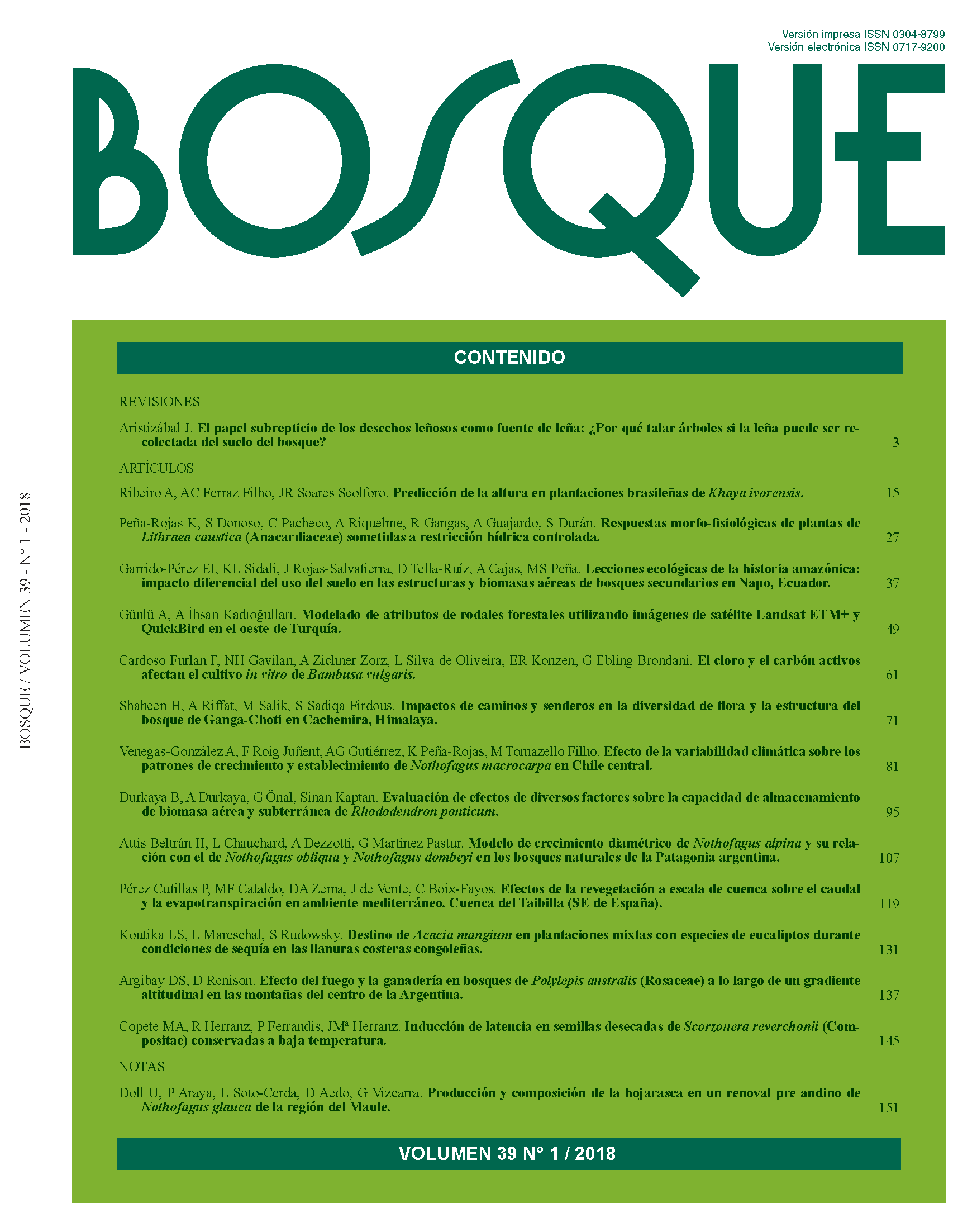Ecological Lessons from Amazonian History: differential impact of land-uses on the structures and aboveground biomass of secondary forests in Napo, Ecuador
Main Article Content
Abstract
Amazonian forests mitigate climate change, are being deforested and recover their structures and functions throughout secondary succession. It is necessary to understand how different land-uses alter such a recovery and why landowners decide to clear-cut some areas while letting others to fallow. That was addressed by counting and measuring all trees of at least 10 cm diameter in four one-hectare plots whose land-use histories were exhaustively reconstructed using ethnographic-historical methods. Plots A (12-15 years old), B (22-25 years old) and C (35-37 years old) were pastures and oligocultures for feeding human populations growing during a period of vigorous oil-exploration; next, food demands changed and plots were abandoned. Plot D (35-40 years old) was used for self-consumption, shifting agriculture (more than 50 planted species), afterwards used and managed for extracting resources during secondary succession. Tree diameters in plots B and C were larger compared to those found in plots A and D –which were similar. The latter suggests that fallow management in plot D kept its forest structurally young, hence, the Amazon may include forests chronologically older than the age suggested by their structures. Similar results were found for total basal area and aboveground biomass, while the high density of individuals in plot D suggests a vigorous gap regeneration. In conclusion: different land-uses are confirmed to alter further succession, and the changes of food demand and food security affect farmer`s decisions on letting forests to recover. Local development planners may take the later into account.

